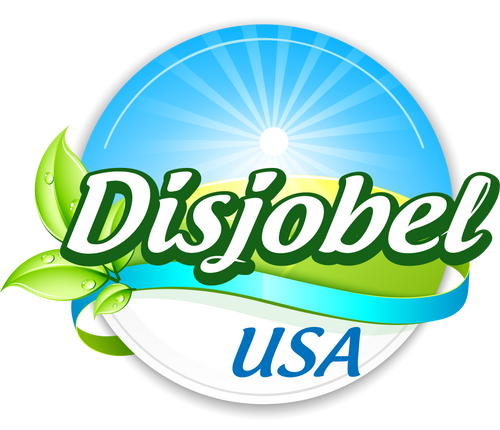Baked goods have come a long way over 8,000 years to be as we know them today. It is believed that the first bakery products emerged during the Neolithic, when someone carelessly left a cake of ground seeds near a heat source.
Later, the Egyptians discovered the fermentation process by brewing beer, and used yeasts to improve bread. In 100 A.D., the Greeks began to make different types of bread from their barley, wheat, rye, and rice crops.
As time went by, European cuisine gave rise to a great variety of sweet and savory baked goods. Until the beginning of the 20th century, these goods were always baked at home using traditional local recipes.
However, with increasing industrialization, bread-making moved to large factories. As a matter of fact, in 1927 the American inventor Otto Rohwedder created a machine that sliced and packaged it.
Thus, it became the star product on the table of North American families. Later, specialty bakeries would emerge to produce gluten-free bread, specialty pastries, and whole-grain bread, among other items.
ABCs of Baked Goods in the Food Industry
Certain popular of these have earned a special place in some North American countries. The following section analyses the most common bakery products and their characteristic cooking forms, basic ingredients, and evolution in parallel with new consumption habits:
Bread for Sandwiches and Hamburgers
Baked goods have experienced strong changes in the American and Canadian fast food sectors. Large chains are innovating in their buns and rolls for sandwiches and hamburgers.
- Artisan style: fast food has taken a gourmet turn by diversifying its offerings with French or Italian cuisine bread, such as ciabatta, baguette, brioche or sliced bread.
- Premium: ultra-soft textured bread for hot dogs and other fast-food dishes.
- Gluten-free: alternative TACC-free ingredients replace wheat and corn flour. This bread is often made with amaranth and quinoa instead of wheat flour, traditionally used for celiac products.
- Healthier versions: large fast-food chains are substituting high fructose corn syrup in their breads and muffins.
Unleavened Baked Goods
Quick bread is very common in North American pastry and bakery. It is so-called because it has no yeast, so it does not require a long fermentation and kneading process. Instead, baking powder and baking soda are used as leavening ingredients.
It is quicker to make because it goes directly from mixing to baking. Most of these products have a less fluffy and soft texture than yeast-leavened bread. However, the industry offers a wide variety of quick breads with different uses:
- Vegans: fruit or vegetable-based breads and puddings, such as banana and zucchini, are very popular among people who follow a vegan diet or want to enjoy healthier bakery products.
- Soda bread: it is an Irish bread in which baking soda replaces the yeast. Its basic ingredients include flour, salt, and buttermilk.
- American cornbread: is one of the main of the southern United States made with cornmeal, butter, eggs, milk, and granulated sugar.

Healthy Bakery
In recent years, the food industry has had to adapt to new market demands. Consumers are seeking healthier alternatives to traditional products, characterized by lower levels of fat, salt, sugar, and even gluten content. For example:
- Buns and doughs made with vegetable fats instead of butter. For example, premium margarine and vegetable oils. Solid vegetable fats is the main ingredient for cake, pie fillings, and cupcake
- Baked goods based on sourdough and whole wheat flour. This results in artisan-style breads with an excellent fiber content and a natural leavening.
- Sweets and cakes containing egg and milk from pasture-fed, free-range animals. In the North American confectionery industry, it is very common to use corn starch to obtain fluffier preparations and as a thickener in sauces or toppings.
Baked Goods: Crackers
The United States is one of the largest global consumers of different types of cookies. In particular, those made of vanilla and butter. Chocolate chip sablé dough cookies are also a classic.
One of the major American baking traditions is the coating of cookies and cakes with icing. This is made with whipped butter, powdered sugar, and natural or artificial coloring/flavoring.
This coating used for cake fillings, not only adds flavor, aroma, and color. It also enhances the appearance of bakery products with a smooth, soft, professional-looking coating.
How to Optimize the Flow of Food Businesses
Do you manufacture and market baked goods? Consider these suggestions to make manufacturing processes in the food industry more efficient:
- Implement quality and safety control systems according to official standards, such as BRCGS Food and IFS Food.
- Permanently control and manage warehouses to avoid expiration of raw materials or lack of supplies at the last minute.
- Monitor production in real-time with specialized software to control the duration of each cycle, eliminate downtime, relieve tasks, and measure resource consumption.
- Using top-quality food inputs. This helps to recreate the best recipes and offer bakery products that meet consumer demands.
Food manufacturing companies must guarantee constant production to meet market demands. Take this information into account to adapt your baked goods to local consumption trends.
Bibliographic references
Avelar, C. (2023). The art of bakery, know its history and evolution. Gastrolab.
https://www.gastrolabweb.com/especiales/2023/2/17/el-arte-de-la-panaderia-conoce-su-historia-evolucion-33423.html
BBC World. (2017). The profound change that paved the way for the creation of the sliced bread they sell in the supermarket. https://www.bbc.com/mundo/noticias-40598512
Granotec. (2018). Trends in the Bakery category. https://www.granotec.com/articulos-granotec/36-tendencias-en-la-categoria-de-panaderia





















